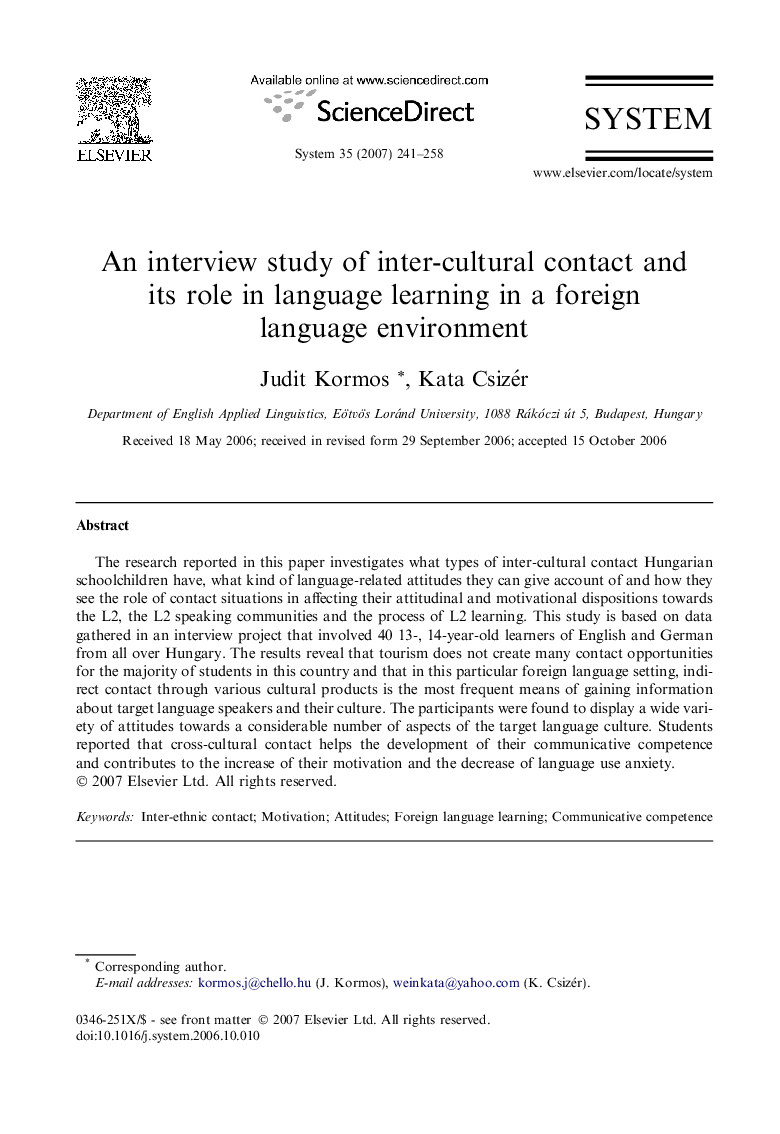| Article ID | Journal | Published Year | Pages | File Type |
|---|---|---|---|---|
| 373830 | System | 2007 | 18 Pages |
The research reported in this paper investigates what types of inter-cultural contact Hungarian schoolchildren have, what kind of language-related attitudes they can give account of and how they see the role of contact situations in affecting their attitudinal and motivational dispositions towards the L2, the L2 speaking communities and the process of L2 learning. This study is based on data gathered in an interview project that involved 40 13-, 14-year-old learners of English and German from all over Hungary. The results reveal that tourism does not create many contact opportunities for the majority of students in this country and that in this particular foreign language setting, indirect contact through various cultural products is the most frequent means of gaining information about target language speakers and their culture. The participants were found to display a wide variety of attitudes towards a considerable number of aspects of the target language culture. Students reported that cross-cultural contact helps the development of their communicative competence and contributes to the increase of their motivation and the decrease of language use anxiety.
